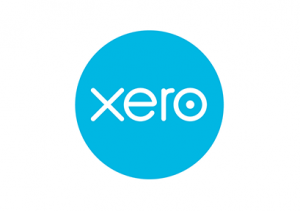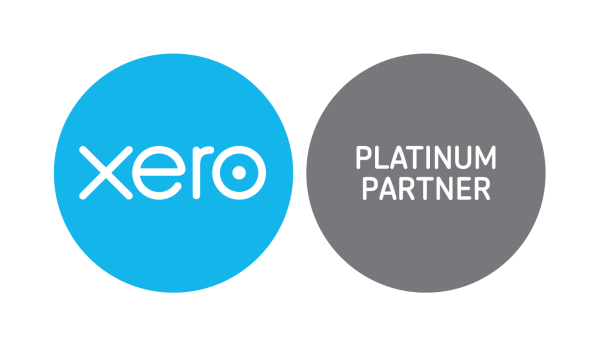How to reconcile in Xero

What is reconciling?
Before I completed any formal bookkeeping training, I still remember feeling confused about the word Reconciling. Add to this that Xero makes it very easy, sometimes perhaps too easy to “Reconcile” by pressing OK without needing to understand what’s actually going on.
Reconciling means matching each $ item on your bank statement to a transaction created in Xero.
As we know, Xero is a super-duper way of keeping track of what’s going on in your business. Your Xero business file will likely include transactions that match bank statement lines as well as other transactions added into your Xero file which don’t match anything on a bank statement. (e.g. depreciation).
The 3 Steps to Reconciling in Xero
There are 3 core steps to reconciling in Xero, and often Xero has shortcuts so you may do all three steps with the click of just one button.
1. Bank Statement Lines come into Xero (usually automatically)
Bank Statement Lines are everything on your bank statements for the bank accounts you have chosen to bring into Xero. They should be exactly the same as your real bank statement. In general only business accounts are brought into Xero but there are exceptions to this.
Automatic Bank Feeds mean your statement lines come into Xero automatically so you don’t have to enter them manually. They show on the LHS of the Xero Dashboard.
2. Transactions get created in Xero (sometimes automatically)
Transactions in Xero are all the transactions which record what’s happening in your business, including money coming in and out. Here are the main types of transactions:
- Payments you have received from Invoices you created and sent from Xero
- Payments you made on Bills received from suppliers that you entered into Xero
- Records of money you’ve spent for expenses which are not paying a bill from a supplier. These are called Spend Money transactions in Xero – you can create them as part of matching, or you can create them separately within your Xero file, for matching later.
- Records of money you’ve received into your business, that are not payments for invoices you sent. These are called Receive Money transactions in Xero – you can create them as part of matching, or you can create them separately within your Xero file, for matching later.
3. Bank Statement Lines and Xero Transactions get matched
This is normally what happens in the Reconciling Screen – matching Left and Right sides together. There are other ways as well which I’m not mentioning today.
This might happen by searching for a transaction which has already been created in Xero, or it might happen by instantly creating a transaction in Xero directly from the Reconcile screen.
Observations
- If a Transaction has already been pre-entered into Xero, when reconciling Xero might find it automatically and it will pop up and show in Green on the Right Hand Side of the Xero Dashboard.
- If you know a document has been created (e.g. an invoice has been created and approved and sent), then you may need to search for the match if it doesn’t pop up in green. Xero often won’t find the matching document so you have to go and find it using Find and Match.
- If there is no pre-recorded transaction in Xero to match the bank statement line, then you can create a transaction as you go, directly from the reconcile screen. This is like a shortcut instead of first creating a transaction, and then reconciling it.
What are the 4 tabs on the Xero Reconciling Dashboard?

The Reconcile Screen is Xero’s genius where Bank Statement lines show on the Left Side and Transactions show or are added on the Right Side. With all kinds of tricks to make matching (reconciling) easy.
Sometimes Xero will show a suggested match in Green – which might be correct, or might not be – you need to check and confirm.
Often a transaction can be created and reconciled at the same time, in one step.
The Cash Coding Screen (which you may or may not see depending on your permissions) is where multiple bank statement lines can have transactions created and reconciled at the same time. Cash coding can’t be used if you need to match to pre-existing transactions like Invoices or Bills already in Xero.
The Bank Statements Screen is a list of all your bank statement lines brought into Xero either from an automatic bank feed, or by manually importing them. This should exactly match your real bank statement – always - no exceptions.
The Account Transactions Screen is a list of all your transactions that have been pre-entered into Xero. That means records of money coming in or out. So you won’t see your Invoices or Bills in here, but you will see Payments on invoices and bills. The Invoices and Bills are documents, not transactions – the Payments and Receipts are money coming in and out and are transactions.
How do transactions get created in Xero?
There are a myriad of ways to create transactions in Xero, from different screens and different areas of Xero. Xero is fantastically flexible in this way but it does mean that sometimes you may not realise you are creating transactions. Here’s some examples of types of transactions, where they are created from, and how they appear when reconciling from the Xero Dashboard:
| Transaction Type | How it’s created in Xero | How it gets reconciled |
| Invoices | Created from Business/ Invoices | If a payment for the full amount is received into your account, Xero might automatically find the Invoice you have created and the transaction will appear in Green on the RHS of the Dashboard. If the payment is not for the right amount, Xero likely won’t automatically find it and you’ll need to use “Find and Match”. |
| Spend and Receive Money | Created from the Manage Account button | Sometimes you might pre-create a Spend or Receive Money Transaction if you want to save a relevant document (eg. Receipt), or record details at the time that you might forget. You might do this from the Xero App. Pre-created Spend and Receive Money transactions might pop up in Green on the reconciling dashboard if the amount matches. |
| Spend and Receive Money | Created on the fly from the reconcile dashboard, while reconciling. | Sometimes there are no pre-existing transactions for Xero to find so nothing will appear in Green. Then you will be creating the transaction from the Reconcile dashboard – either using the Create Tab, or using a Bank Rule. |
| Cash Coding | Created on the fly in the cash coding screen | This is a fast way of coding lots of transactions at the same time – when you know there are no pre-created transactions to find and match to. It especially works well if you have lots of bank statement lines that are similar. |
Accidental Duplicate Transactions
A common problem is when a transaction has been created prior to reconciling, but for whatever reason it doesn’t appear in Green during reconciling, so you create another transaction using the “Create” tab on the Reconcile Dashboard. This makes a duplicate because the original transaction remains hidden and unfound. Common reasons this happens includes:
- Bills being left in Draft so they can’t be matched
- Payments being received and being coded as Sales, but not matched to the Invoice that was issued to the client.
- Payments being made and being coded to Expenses, but not matched to the Bill that was received from the supplier.
You can see if there are unexplained Unreconciled Transactions by looking at your Transactions Tab in Xero and searching for Unreconciled items – you will soon see ones that you know should have been matched, but haven’t been.
How to best configure Xero for your business
Living Business can help you find the best way to create and reconcile transactions in Xero and get the most out of your business software . Talk to a Xero expert.
